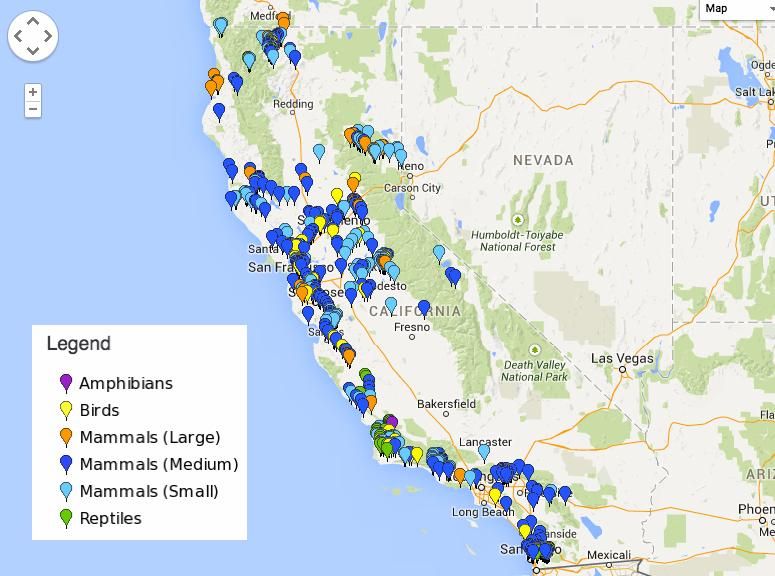Changes in California’s Roadkill Linked to State’s Drought
The California Roadkill Observation System studies wildlife by mapping out crowd-sourced roadkill sightings
/https://tf-cmsv2-smithsonianmag-media.s3.amazonaws.com/filer/5d/a8/5da8e154-1579-4d56-9f79-dee7a6bac76e/frog.jpg)
Californian researchers are observing effects of their state's drought in a rather unusual source—dead animals on the highway.
Over the past six years, the California Roadkill Observation System (CROS) has logged nearly 300,000 cases of squashed species across the state. But, recently, CROS has shown changes in roadkill abundance, and the scientists link that change to California’s monster drought.
The early-drought observations “show that there was a spike in roadkill numbers in the drought’s early stages,” Grist explains. One ecologist working on the project "suspects this is because animals were roaming in search of food and water." But now, as the drought has dragged on and the animals have become increasingly parched, the trend has reversed. Grist continues: “Roadkill numbers are decreasing because – yep, you guessed it – there are simply fewer critters overall.”
The researchers use the roadkill data not just to track the effects of the drought, but to get a better overall picture of the health of the state's wildlife. They've looked, for example, at whether animals seem to actually use wildlife corridors, bridges that are built across highways to connect pieces of nature. (They don't.)
“I think of roads as a continuous wildlife sampling device,” Fraser Shilling, the UC Davis professor who operates the database, told Vox. And Vox explains:
Most wildlife-monitoring systems focus on specific species, often using motion-detecting cameras or people manually counting. But because virtually all species are prone to getting run over from time to time, mapping roadkill instead can give you information about a huge range of animals: the UC Davis system, the largest of several around the country, includes roadkill data on 350 of California’s 680 native vertebrate species.
The CROS map is put together through a crowd-sourced collection of road kill sightings; anyone can file a report on the group’s website. If there is a change in how many of a particular type of animal end up as flattened fauna, it usually indicates a change in that species' overall abundance.
